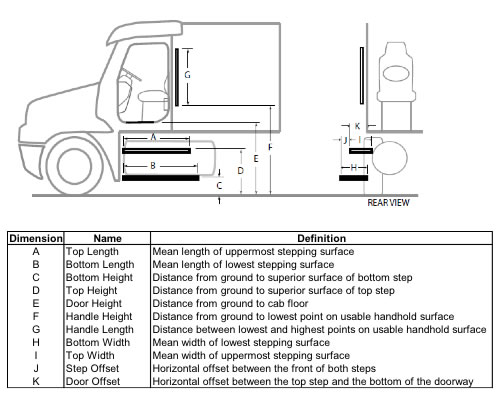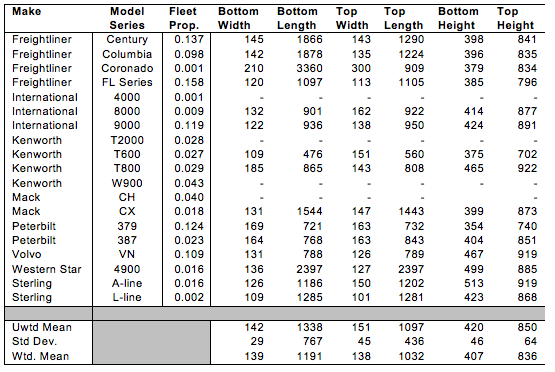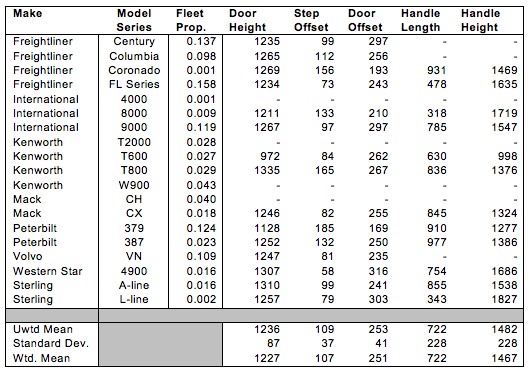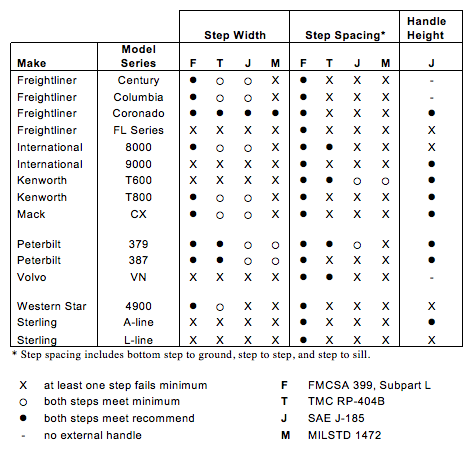Ingress/Egress System Dimensions
Measuring Dimensions
Objective: Quantify the configurations of the IE systems on trucks in use.
Method:
1. A set of dimension definitions were developed based on consideration of the dimensions defined in MIL-STD 1472, SAE J1100, and other standards and guidelines.
2. Manual measurements were made on a total of 33 trucks.
3. A computational method using the PhotoModeler photogrammetry software was developed and applied to measure an additional 34 trucks, for a total of 67.
4. To develop useful fleet estimates, crash data from not-at-fault truck crashes were used to estimate the prevalence of various make/model combinations on U.S. roads. The prevalence estimates were used to weight the measurement results
4. The results were tabulated and compared with current guidelines.

Dimensions of Trucks In Use
The tables below show the prevalence of trucks on the road based on representation in not-at-fault crashes for 19 models from 8 manufacturers. Dimensions were obtained for 15 of these models, representing 89 percent of the fleet. For purposes of computing weighted means, the missing model fleet fractions were pooled with the next-most-common model from the same manufacturer. Overall, weighting for fleet prevalence produced slightly smaller mean estimates, reflecting the fact that smaller trucks are more common.
All dimensions in mm.


This table compares the truck dimensions to four standards.

Key Findings:
• Trucks in use vary widely in step and handhold configurations, but all truck cabs in this category have two steps.
• Meaningful fleet dimension distribution information can be obtained by weighting model data by prevalence.
• None of the popular models conforms fully to the recommendations in the standards, although several are largely compliant.
©2017 University of Michigan